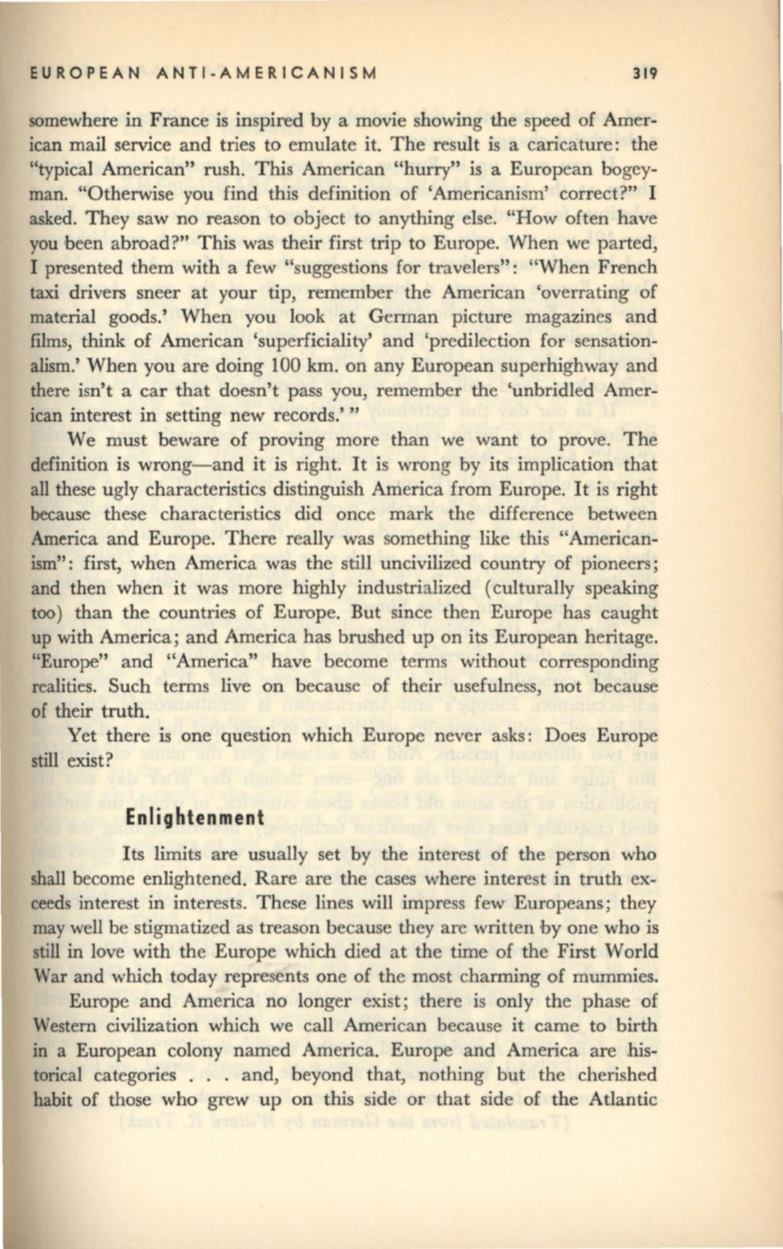
EUROPEAN
ANTI·AMERICANISM
319
somewhere in France is inspired by a movie showing the speed of Amer–
ican mail service and tries to emulate it. The result is a caricature: the
"typical American" rush. This American "hurry" is a European bogey–
man. "Otherwise you find this definition of 'Americanism' correct?" I
asked. They saw no reason to object to anything else. "How often have
you been abroad?" This was their first trip to Europe. When we parted,
I presented them with a few "suggestions for travelers": "When French
taxi drivers sneer at your tip, remember the American 'overrating of
material goods.' When you look at German picture magazines and
films, think of American 'superficiality' and 'predilection for sensation–
alism.' When you are doing 100 km. on any European superhighway and
there isn't a car that doesn't pass you, remember the 'unbridled Amer–
ican interest in setting new records.' "
We must beware of proving more than we want to prove. The
definition is wrong-and it is right.
It
is wrong by its implication that
all these ugly characteristics distinguish America from Europe.
It
is right
because these characteristics did once mark the difference between
America and Europe. There really was something like this "American–
ism": first, when America was the still uncivilized country of pioneers;
and then when it was more highly industrialized (culturally speaking
too) than the countries of Europe. But since then Europe has caught
up with America; and America has brushed up on its European heritage.
"Europe" and "America" have become terms without corresponding
realities. Such terms live on because of their usefulness, not because
of their truth.
Yet there is one question which Europe never asks: Does Europe
still exist?
Enlightenment
Its limits are usually set by the interest of the person who
shall become enlightened. Rare are the cases where interest in truth ex–
ceeds interest in interests. These lines will impress few Europeans; they
may well be stigmatized as treason because they are written by one who is
still in love with the Europe which died at the time of the First World
War and which today represents one of the most charming of mummies.
Europe and America no longer exist; there is only the phase of
Western civilization which we call American because it came to birth
in a European colony named America. Europe and America are his–
torical categories . . . and, beyond that, nothing but the cherished
habit of those who grew up on this side or that side of the Atlantic


